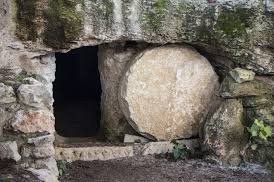By Daniel Oscar Rutilio
The Gospels are clear that Jesus saw his death on the Cross like a new Passover, the Jewish festival of deliverance from oppression. In this model Jesus is understood as the Passover lamb, sacrificed in obedience to God the Father, transformed for the liberation of God’s people, a shared feast of God’s gifts. The sacrifice of the Cross is efficacious for our salvation because it is Jesus completing the work of his incarnation by sharing in our death and hence fully uniting himself with humanity. This means that we, joined to the cosmic body of Christ, will not die in sin, but through his resurrection will share with him in the life of God.
Christ here does not merely take our place as a substitute, but participates in us – as we do in him. Hence, Jesus’ blood is spilled for us, not as a vindictive punishment or a human sacrifice to appease God’s anger, but as the sharing of his divine lifeblood with us. So what does “Bombadilic” harmony feel like in the Jewish experience and yearning?:
“As the rain and the snow come down from heaven, and do not return to it without watering the earth and making it bud and flourish, so that it yields seed for the sower and bread for the eater, 11 so is my word that goes out from my mouth: It will not return to me empty, but will accomplish what I desire and achieve the purpose for which I sent it. 12 You will go out in joy and be led forth in peace; the mountains and hills will burst into song before you, and all the trees of the field will clap their hands. 13 Instead of the thornbush will grow the juniper, and instead of briers the myrtle will grow. This will be for the Lord’s renown, for an everlasting sign, that will endure forever.”
And as Tolkien writes in his “sense” of how Tom Bombadil and Goldberry should be and perhaps are:
“Old Tom Bombadil had a merry wedding, crowned all with buttercups, hat and feather shedding; his bride with forget me nots and flag-lilies for garland was robed all in silver-green. He sang like a starling, hummed like a honey-bee, lilted to the fiddle, clasping his river-maid round her slender middle. Lamps gleamed within his house, and white was the bedding; in the bright honey-moon Badger-folk came treading, danced down under Hill, and Old Man Willow tapped, tapped at window-pane, as they slept on the pillow, on the bank in the reeds River-woman sighing heard Barrow-wight in his mound crying. Old Tom Bombadil heeded not the voices, taps, knocks, dancing feet, all the nightly noises; slept till the sun arose, then sang like a starling: ‘Hey! Come derry-dol, merry-dol, my darling!’ sitting on the door-step chopping sticks of willow, while fair Goldberry combed her tresses yellow.”
As Easter comes with her song, let us believe in the vision of cosmic harmony that Tolkien sensed and that Joost is searching for an “empirical verification” of in his documentary “Finding Tom Bombadil” in which he looks for Tolkien’s enigmatic character (who Tolkien said he “sensed” in our world. I commend Joost – he has inspired me. I am delighted in his sincerity. It reminds me of Thomas the apostle: Now Thomas (also known as Didymus), one of the Twelve, was not with the disciples when Jesus came. So the other disciples told him, “We have seen the Lord!” But he said to them, “Unless I see the nail marks in his hands and put my finger where the nails were, and put my hand into his side, I will not believe.” A week later his disciples were in the house again, and Thomas was with them. Though the doors were locked, Jesus came and stood among them and said, “Peace be with you!” Then he said to Thomas, “Put your finger here; see my hands. Reach out your hand and put it into my side. Stop doubting and believe.” Thomas said to him, “My Lord and my God!” Then Jesus told him, “Because you have seen me, you have believed; blessed are those who have not seen and yet have believed.

